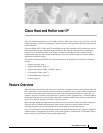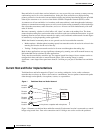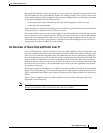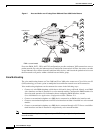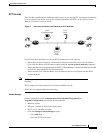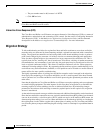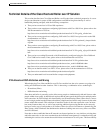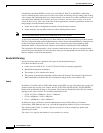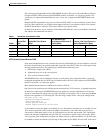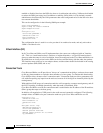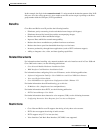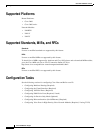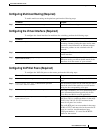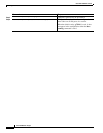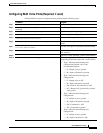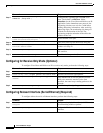
Cisco Hoot and Holler over IP
Feature Overview
4
Cisco IOS Release 12.1(5)T
Figure 2 Hoot and Holler over IP using Cisco 2600 and Cisco 3600 Series Routers
Four-wire E&M, E1/T1, FXO, and FXS configurations provide continuous VoIP connections across a
packet network. By using the inherent point-to-multipoint characteristic of IPmc, the routers can take
several inbound voice streams from the traditional hoot devices, and forward the packetized voice over
the IP network to all parties within a defined hoot and holler group.
Voice Multicasting
The voice multicasting feature on Cisco 2600 and Cisco 3600 series routers uses Cisco Voice over IP
(VoIP) technology to create a point-to-multipoint hoot and holler network over an IP connection.
Voice multicasting telephones can be connected to routers in the following ways:
• Connect a 4-wire E&M telephone, which has no dial and is always off-hook, directly to an E&M
voice interface card that is installed in a voice network module. Configure the E&M interface for
four-wire trunk operation. For information about configuring E&M interfaces, see the
Cisco IOS Multiservice Applications Configuration Guide , Release 12.1.
• Connect a conventional telephone to a PBX that is connected to an E&M voice interface card.
• Connect a conventional telephone to an FXS voice interface card that is installed in a voice network
module.
• Connect a conventional telephone to a PBX that is connected through a E1/T1 line to a multiflex
trunk interface card that is installed in a high-density voice network module.
Note The voice multicasting feature supports only one E1/T1 line per high-density voice
network module.
35839
V
V
V
V
V
V
Multicast group 1
Multicast group 2
FXS
E
&M phones
Turret Turret
Turret
PBX
PBX
PBX
FXO
FXO
FXO
T1/E1
T1/E1
Multicast group 3
E&M = ear and mouth



